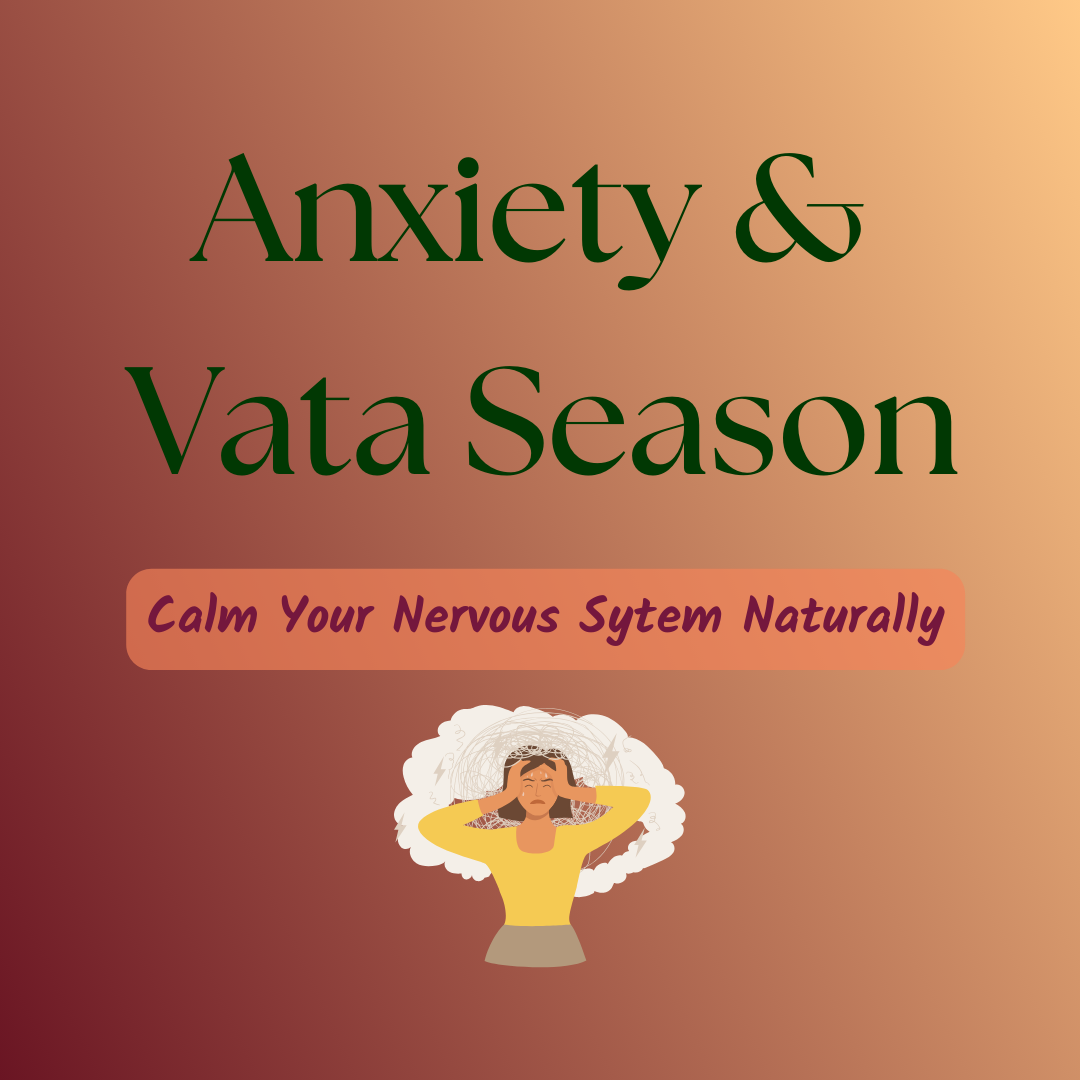
Fall is the season most associated with Vata dosha - light, dry, mobile, and quick. While these qualities fuel creativity and change, too much of them can leave us feeling ungrounded and anxious. The truth is, Vata can be out of balance any time of year, but during fall its energy often escalates. In this post, we’ll explore how Vata imbalance shows up in the nervous system, why breath and routine are essential, and how small practices in food, ritual, and yoga therapy can help you feel steady again.
Fall is one of the most beautiful times of year with crisp mornings, cozy sweaters, and turning leaves. But it can also bring an undercurrent of anxiety, scattered thoughts, and a restless mind.
From an Ayurvedic perspective, this isn’t random. Fall is the season most associated with Vata dosha which is light, dry, mobile, and quick. While these qualities fuel creativity and change, too much of them can leave us feeling ungrounded and anxious.
It’s important to remember that Vata can go out of balance any time of year, but the energy of fall often escalates it. When Vata spikes, the nervous system tends to feel it first.
The good news? With the right routines, foods, and practices, you can restore balance and step into fall feeling calm and steady.
✨ What is Anxiety Through the Ayurvedic Lens?
In Ayurveda, anxiety is often seen as a Vata imbalance. When the air and space elements dominate, the body and mind take on those qualities: restless, quick, cold, and unanchored. Instead of treating anxiety as “something wrong,” Ayurveda teaches us to see it as a sign that the body and mind are craving stability.
Signs of Vata Imbalance in the Nervous System
- Racing or looping thoughts
- Insomnia or waking up around 2–3 AM
- Difficulty focusing or finishing tasks
- Digestive irregularity (constipation, bloating, gas)
- Feeling cold, dry skin, or brittle hair and nails
If you notice these patterns, it’s a signal that your nervous system is asking for more grounding and steadiness.
Solutions for Calming the Nervous System
Yoga, Breath, and the Nervous System
In my private practice, I’ve seen a strong connection between dysfunctional breathing patterns and anxiety, often showing up alongside other Vata-related symptoms.
Breathing is one of the most direct ways to influence your nervous system. Shifting from shallow, chest-driven breathing to diaphragmatic, rhythmical breathing sends a signal of safety to the body. This concept is at the heart of my work: helping people regulate the nervous system by restoring balance to breath and prana.
Food as Nervous System Support
What you eat shapes how grounded you feel. Dry, light foods like popcorn, crackers, or beans can aggravate Vata and make anxiety worse. Shifting toward warm, moist, and easy-to-digest meals such as soups, stews, or kitchari nourishes the nervous system and creates a rhythm of stability in daily life.
Rituals That Anchor You
Vata thrives on consistency. Creating rituals and repeating them regularly is one of the most powerful ways to restore balance. For example, you might draw a hot bath with bath salts, light candles, place a crystal by your side, and listen to a short meditation.
Simple acts like this can be incredibly grounding when practiced with rhythm. If you are looking for inspiration, my self-care kits are designed as ready-made rituals to help you create that consistency at home.
Case Study: EH’s Journey to Calm and Grounded
When EH began Rooted, she was seeking more stability in her body and mind. Through gentle, incremental practices, she learned essential grounding techniques that she could return to again and again. Over time, these rituals became anchors that helped her feel more aligned with herself and more connected to the natural world.
Her experience shows the power of creating consistent routines with eating, lifestyle, and movement. She noticed better food choices, healthier boundaries around how she spent her time, and a greater sense of alignment. As she put it, “Every day I choose what decisions to make, and if I make good choices, it has a drastic impact over time.”
The shift was not just physical but deeply emotional. She shared, “Self-esteem has been re-established. I feel more grounded and mentally stable. I can honestly say I will never abandon myself again and make the unhealthy choices I made in the past.”
Her transformation highlights what Rooted is all about: cultivating resilience through routine, grounding, and practices that strengthen your relationship with yourself.
✨Read her full case study here
Your Next Step
Everything shared here - routine, breath, food, and ritual - is woven into my Rooted course. If this blog resonates with you, Rooted will feel like home. It is where we go deeper into cultivating resilience with yoga therapy, breathwork, and seasonal living practices that calm the nervous system and bring you back to yourself.
For a deeper dive into Vata imbalance, you can also explore my blog Get Grounded.
And if you are not sure where to begin, take my What Season Are You? Quiz to discover whether anxiety is your most important focus right now, or if another area of balance might be the better starting point.
